Preface
Synchronous programming: In synchronous programming, tasks are executed one at a time. Only when one task is completed, the next task will be unblocked .
Asynchronous programming: In asynchronous programming, multiple tasks can be performed simultaneously. You can move to another task before the previous task is completed.

In Spring Boot, we can use the @Async annotation to implement asynchronous behavior.
Implementation steps
1. Define an asynchronous service interfaceAsyncService.java
public interface AsyncService {
void asyncMethod() throws InterruptedException;
Future<String> futureMethod() throws InterruptedException;
}2. Implement the defined interfaceAsyncServiceImpl.java
@Service
@Slf4j
public class AsyncServiceImpl implements AsyncService {
@Async
@Override
public void asyncMethod() throws InterruptedException {
Thread.sleep(3000);
log.info("Thread: [{}], Calling other service..", Thread.currentThread().getName());
}
@Async
@Override
public Future<String> futureMethod() throws InterruptedException {
Thread.sleep(5000);
log.info("Thread: [{}], Calling other service..", Thread.currentThread().getName());
return new AsyncResult<>("task Done");
}
}AsyncServiceImplis aspringmanagedbean.Your asynchronous method must be public and decorated with the
@Asyncannotation.The return type is restricted to
voidorFuture.
3. Define a controllerAsyncController.java
@EnableAsync
@RestController
@Slf4j
public class AsyncController {
@Autowired
AsyncService asyncService;
@GetMapping("/async")
public String asyncCallerMethod() throws InterruptedException {
long start = System.currentTimeMillis();
log.info("call async method, thread name: [{}]", Thread.currentThread().getName());
asyncService.asyncMethod();
String response = "task completes in :" +
(System.currentTimeMillis() - start) + "milliseconds";
return response;
}
@GetMapping("/asyncFuture")
public String asyncFuture() throws InterruptedException, ExecutionException {
long start = System.currentTimeMillis();
log.info("call async method, thread name: [{}]", Thread.currentThread().getName());
Future<String> future = asyncService.futureMethod();
// 阻塞获取结果
String taskResult = future.get();
String response = taskResult + "task completes in :" +
(System.currentTimeMillis() - start) + "milliseconds";
return response;
}
}Key point, you need to add annotations to enable asynchronous
@EnableAsync, of course, this annotation can be added elsewhere.When this interface is called externally,
asyncMethod()will be executed by another thread created by the default task executor, and the main thread does not need to wait for the completion of the asynchronous method execution.
4. Run it
Now let’s run it and see if it returns asynchronously.


You can see that the /async interface is called, and the method is called in the final step.


Call /asyncFuture and find that the return is more than 5 seconds. Isn’t it asynchronous? In fact, it is also asynchronous, as you can see from the logs, but what we return is Future, and calling Futrue.get() is blocked.
Customized asynchronous task executor and exception handling
Now let’s see what happens if an error is reported in the exception method? Modify the asynchronous code as follows, and a runtime exception will be thrown:

#Execute the asynchronous interface again, as shown below, and the default thread pool and exception handling will be used.

We can also customize the asynchronous method's exception handling and asynchronous task executor. We need to configure AsyncUncaughtExceptionHandler, as shown in the following code:
@Configuration
public class AsynConfiguration extends AsyncConfigurerSupport {
@Override
public Executor getAsyncExecutor() {
ThreadPoolTaskExecutor executor = new
ThreadPoolTaskExecutor();
executor.setCorePoolSize(3);
executor.setMaxPoolSize(4);
executor.setThreadNamePrefix("asyn-task-thread-");
executor.setWaitForTasksToCompleteOnShutdown(true);
executor.initialize();
return executor;
}
@Override
public AsyncUncaughtExceptionHandler
getAsyncUncaughtExceptionHandler() {
return new AsyncUncaughtExceptionHandler() {
@Override
public void handleUncaughtException(Throwable ex,
Method method, Object... params) {
System.out.println("Exception: " + ex.getMessage());
System.out.println("Method Name: " + method.getName());
ex.printStackTrace();
}
};
}
}Run again, the results are as follows:

How @Async works
must be done by using the @EnableAsync annotation Annotate the main application class or any direct or indirect asynchronous method caller class to enable async support. Mainly implemented through proxy mode, the default mode is Proxy, the other is AspectJ. Proxy mode only allows calls to be intercepted through a proxy. Never call an async method from the same class in which it is defined, it won't work.
When annotating a method with @Async, it will create a proxy for the object based on the "proxyTargetClass" attribute. When spring executes this method, by default it searches for the associated thread pool definition. The only spring framework TaskExecutor bean or Executor bean named "taskExecutor" in the context. If neither of these is resolvable, the spring framework SimpleAsyncTaskExecutor will be used by default to handle the execution of asynchronous methods.
The above is the detailed content of How SpringBoot implements asynchronous calls elegantly. For more information, please follow other related articles on the PHP Chinese website!
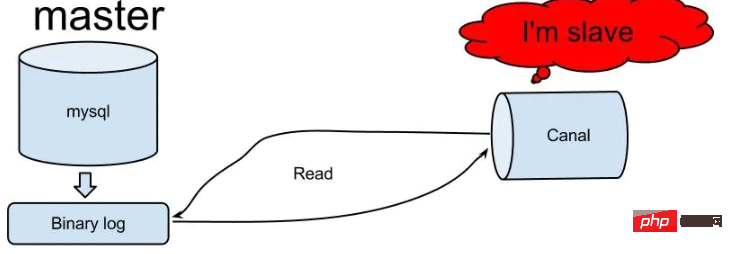 怎么使用SpringBoot+Canal实现数据库实时监控May 10, 2023 pm 06:25 PM
怎么使用SpringBoot+Canal实现数据库实时监控May 10, 2023 pm 06:25 PMCanal工作原理Canal模拟MySQLslave的交互协议,伪装自己为MySQLslave,向MySQLmaster发送dump协议MySQLmaster收到dump请求,开始推送binarylog给slave(也就是Canal)Canal解析binarylog对象(原始为byte流)MySQL打开binlog模式在MySQL配置文件my.cnf设置如下信息:[mysqld]#打开binloglog-bin=mysql-bin#选择ROW(行)模式binlog-format=ROW#配置My
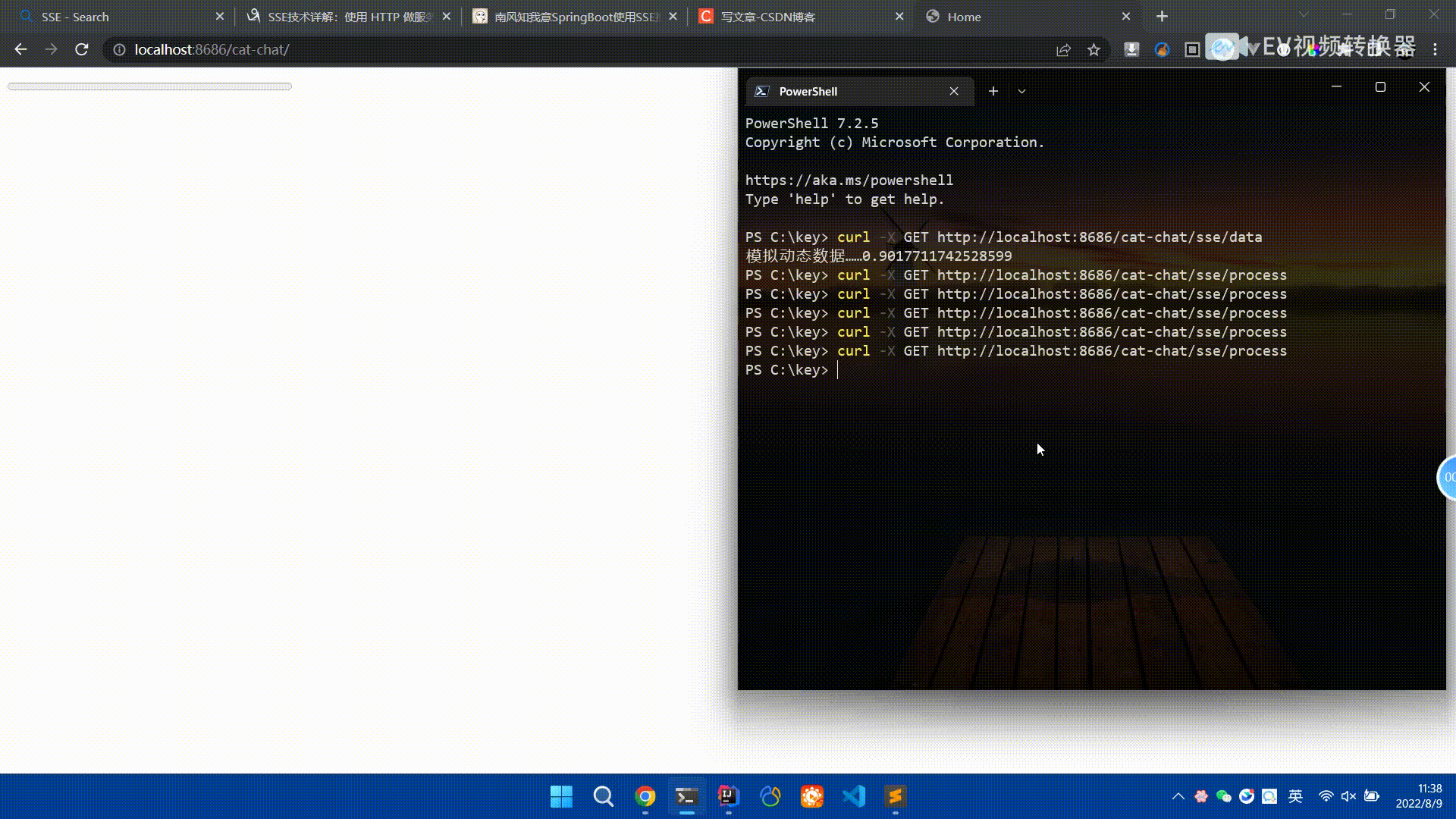 Spring Boot怎么使用SSE方式向前端推送数据May 10, 2023 pm 05:31 PM
Spring Boot怎么使用SSE方式向前端推送数据May 10, 2023 pm 05:31 PM前言SSE简单的来说就是服务器主动向前端推送数据的一种技术,它是单向的,也就是说前端是不能向服务器发送数据的。SSE适用于消息推送,监控等只需要服务器推送数据的场景中,下面是使用SpringBoot来实现一个简单的模拟向前端推动进度数据,前端页面接受后展示进度条。服务端在SpringBoot中使用时需要注意,最好使用SpringWeb提供的SseEmitter这个类来进行操作,我在刚开始时使用网上说的将Content-Type设置为text-stream这种方式发现每次前端每次都会重新创建接。最
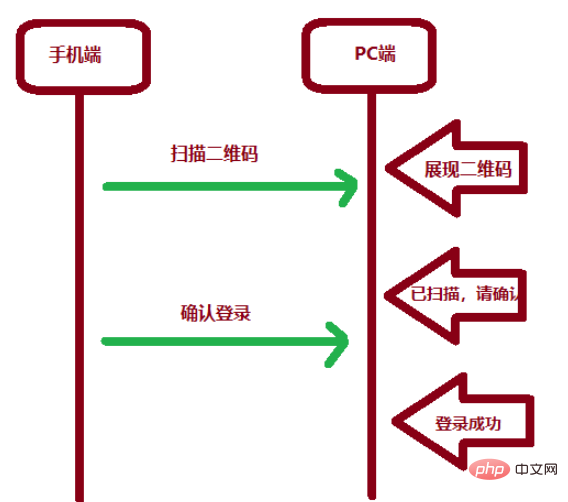 SpringBoot怎么实现二维码扫码登录May 10, 2023 pm 08:25 PM
SpringBoot怎么实现二维码扫码登录May 10, 2023 pm 08:25 PM一、手机扫二维码登录的原理二维码扫码登录是一种基于OAuth3.0协议的授权登录方式。在这种方式下,应用程序不需要获取用户的用户名和密码,只需要获取用户的授权即可。二维码扫码登录主要有以下几个步骤:应用程序生成一个二维码,并将该二维码展示给用户。用户使用扫码工具扫描该二维码,并在授权页面中授权。用户授权后,应用程序会获取一个授权码。应用程序使用该授权码向授权服务器请求访问令牌。授权服务器返回一个访问令牌给应用程序。应用程序使用该访问令牌访问资源服务器。通过以上步骤,二维码扫码登录可以实现用户的快
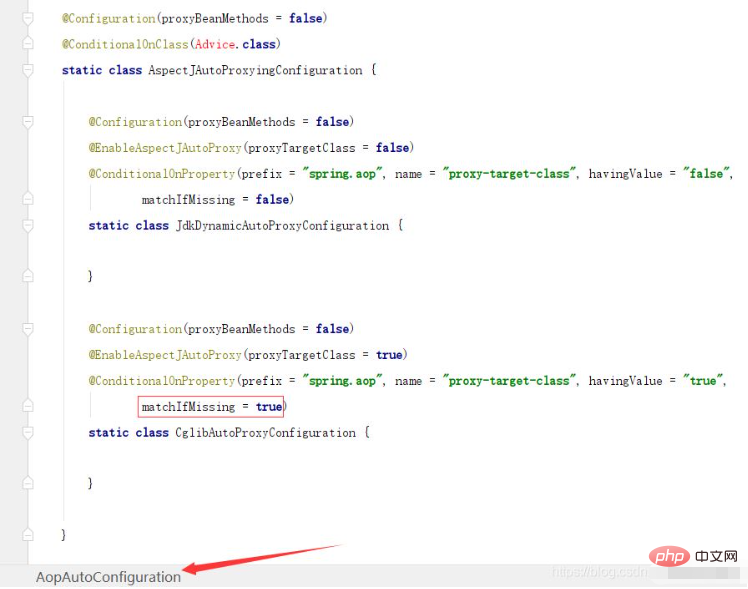 SpringBoot/Spring AOP默认动态代理方式是什么May 10, 2023 pm 03:52 PM
SpringBoot/Spring AOP默认动态代理方式是什么May 10, 2023 pm 03:52 PM1.springboot2.x及以上版本在SpringBoot2.xAOP中会默认使用Cglib来实现,但是Spring5中默认还是使用jdk动态代理。SpringAOP默认使用JDK动态代理,如果对象没有实现接口,则使用CGLIB代理。当然,也可以强制使用CGLIB代理。在SpringBoot中,通过AopAutoConfiguration来自动装配AOP.2.Springboot1.xSpringboot1.xAOP默认还是使用JDK动态代理的3.SpringBoot2.x为何默认使用Cgl
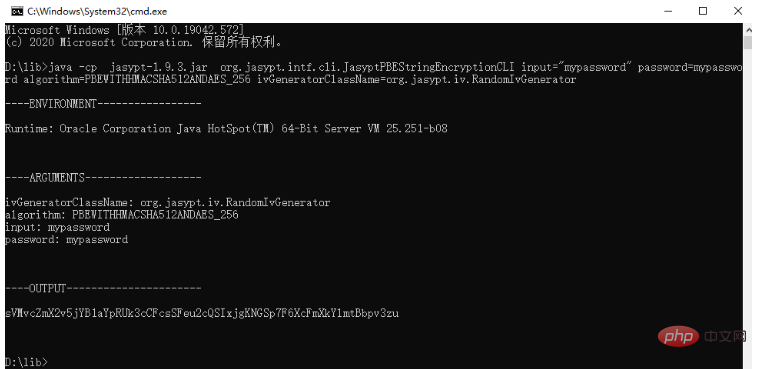 spring boot怎么对敏感信息进行加解密May 10, 2023 pm 02:46 PM
spring boot怎么对敏感信息进行加解密May 10, 2023 pm 02:46 PM我们使用jasypt最新版本对敏感信息进行加解密。1.在项目pom文件中加入如下依赖:com.github.ulisesbocchiojasypt-spring-boot-starter3.0.32.创建加解密公用类:packagecom.myproject.common.utils;importorg.jasypt.encryption.pbe.PooledPBEStringEncryptor;importorg.jasypt.encryption.pbe.config.SimpleStrin
 使用Java SpringBoot集成POI实现Word文档导出Apr 21, 2023 pm 12:19 PM
使用Java SpringBoot集成POI实现Word文档导出Apr 21, 2023 pm 12:19 PM知识准备需要理解ApachePOI遵循的标准(OfficeOpenXML(OOXML)标准和微软的OLE2复合文档格式(OLE2)),这将对应着API的依赖包。什么是POIApachePOI是用Java编写的免费开源的跨平台的JavaAPI,ApachePOI提供API给Java程序对MicrosoftOffice格式档案读和写的功能。POI为“PoorObfuscationImplementation”的首字母缩写,意为“简洁版的模糊实现”。ApachePOI是创建和维护操作各种符合Offic
 springboot怎么整合shiro实现多验证登录功能May 10, 2023 pm 04:19 PM
springboot怎么整合shiro实现多验证登录功能May 10, 2023 pm 04:19 PM1.首先新建一个shiroConfigshiro的配置类,代码如下:@ConfigurationpublicclassSpringShiroConfig{/***@paramrealms这儿使用接口集合是为了实现多验证登录时使用的*@return*/@BeanpublicSecurityManagersecurityManager(Collectionrealms){DefaultWebSecurityManagersManager=newDefaultWebSecurityManager();
 SpringBoot项目打包发布到外部tomcat遇到的问题怎么解决May 10, 2023 pm 05:49 PM
SpringBoot项目打包发布到外部tomcat遇到的问题怎么解决May 10, 2023 pm 05:49 PM先说遇到问题的情景:初次尝试使用springboot框架写了个小web项目,在IntellijIDEA中能正常启动运行。使用maven运行install,生成war包,发布到本机的tomcat下,出现异常,主要的异常信息是.......LifeCycleException。经各种搜索,找到答案。springboot因为内嵌tomcat容器,所以可以通过打包为jar包的方法将项目发布,但是如何将springboot项目打包成可发布到tomcat中的war包项目呢?1.既然需要打包成war包项目,首


Hot AI Tools

Undresser.AI Undress
AI-powered app for creating realistic nude photos

AI Clothes Remover
Online AI tool for removing clothes from photos.

Undress AI Tool
Undress images for free

Clothoff.io
AI clothes remover

AI Hentai Generator
Generate AI Hentai for free.

Hot Article

Hot Tools

SublimeText3 Linux new version
SublimeText3 Linux latest version

WebStorm Mac version
Useful JavaScript development tools

Dreamweaver CS6
Visual web development tools

SAP NetWeaver Server Adapter for Eclipse
Integrate Eclipse with SAP NetWeaver application server.

SublimeText3 Chinese version
Chinese version, very easy to use







